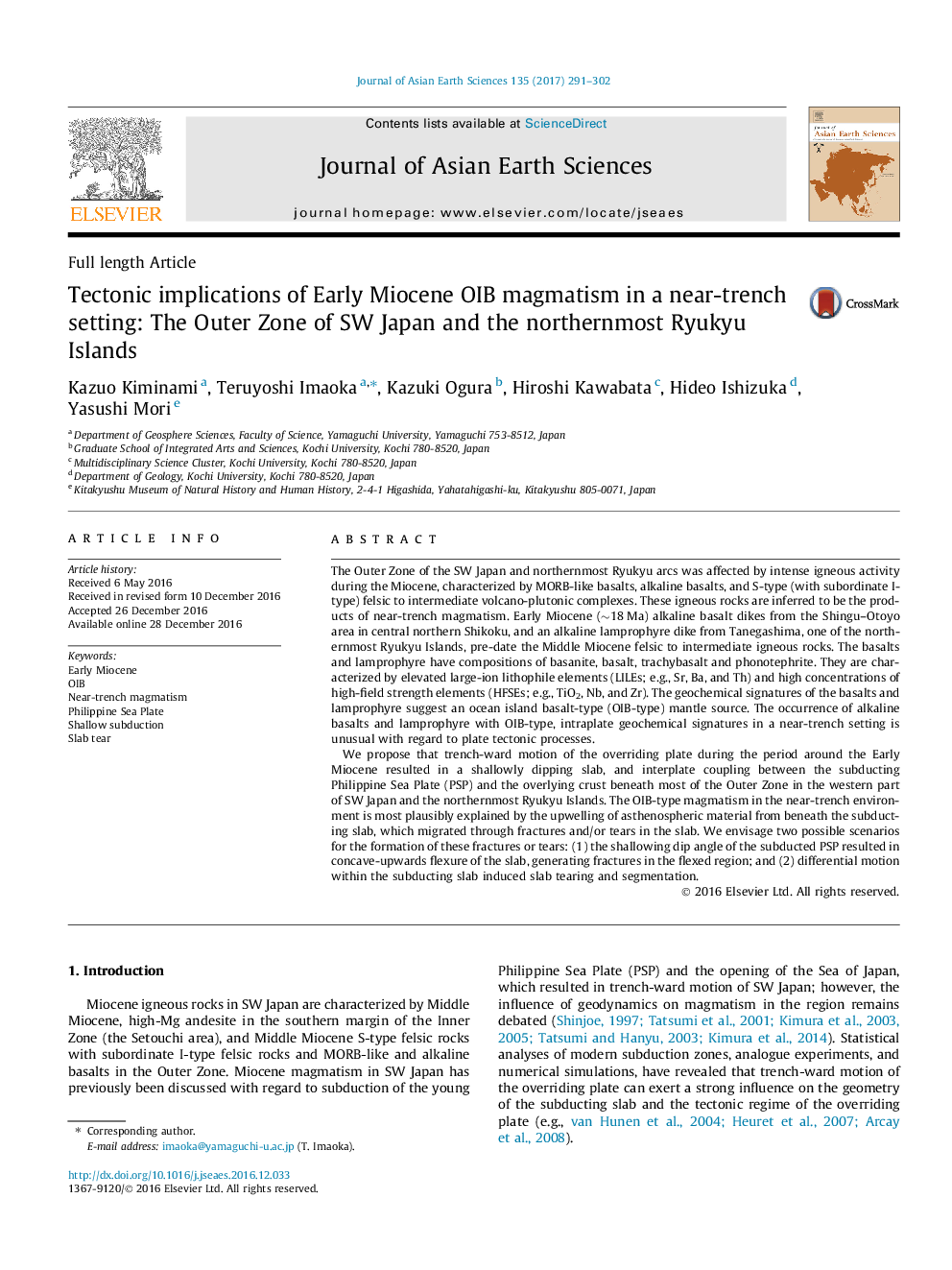| کد مقاله | کد نشریه | سال انتشار | مقاله انگلیسی | نسخه تمام متن |
|---|---|---|---|---|
| 5786119 | 1640336 | 2017 | 12 صفحه PDF | دانلود رایگان |

- Early Miocene OIB magmatism in the Outer Zone of SW Japan and Ryukyu is confirmed.
- Early Miocene shallow subduction of the Philippine Sea slab is proposed.
- Fractures or tears of the slab are responsible for the near-trench OIB magmatism.
The Outer Zone of the SW Japan and northernmost Ryukyu arcs was affected by intense igneous activity during the Miocene, characterized by MORB-like basalts, alkaline basalts, and S-type (with subordinate I-type) felsic to intermediate volcano-plutonic complexes. These igneous rocks are inferred to be the products of near-trench magmatism. Early Miocene (â¼18Â Ma) alkaline basalt dikes from the Shingu-Otoyo area in central northern Shikoku, and an alkaline lamprophyre dike from Tanegashima, one of the northernmost Ryukyu Islands, pre-date the Middle Miocene felsic to intermediate igneous rocks. The basalts and lamprophyre have compositions of basanite, basalt, trachybasalt and phonotephrite. They are characterized by elevated large-ion lithophile elements (LILEs; e.g., Sr, Ba, and Th) and high concentrations of high-field strength elements (HFSEs; e.g., TiO2, Nb, and Zr). The geochemical signatures of the basalts and lamprophyre suggest an ocean island basalt-type (OIB-type) mantle source. The occurrence of alkaline basalts and lamprophyre with OIB-type, intraplate geochemical signatures in a near-trench setting is unusual with regard to plate tectonic processes.We propose that trench-ward motion of the overriding plate during the period around the Early Miocene resulted in a shallowly dipping slab, and interplate coupling between the subducting Philippine Sea Plate (PSP) and the overlying crust beneath most of the Outer Zone in the western part of SW Japan and the northernmost Ryukyu Islands. The OIB-type magmatism in the near-trench environment is most plausibly explained by the upwelling of asthenospheric material from beneath the subducting slab, which migrated through fractures and/or tears in the slab. We envisage two possible scenarios for the formation of these fractures or tears: (1) the shallowing dip angle of the subducted PSP resulted in concave-upwards flexure of the slab, generating fractures in the flexed region; and (2) differential motion within the subducting slab induced slab tearing and segmentation.
300
Journal: Journal of Asian Earth Sciences - Volume 135, March 2017, Pages 291-302